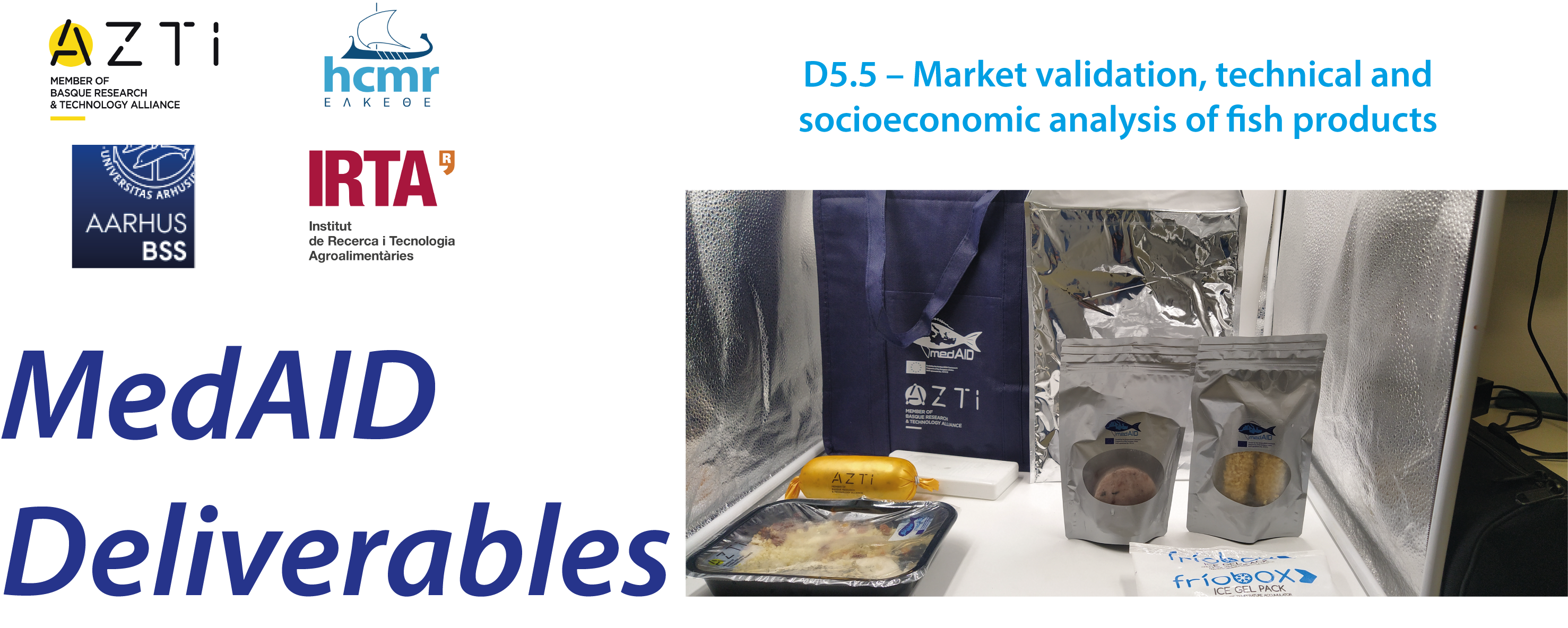Innovation and development of new products for existing and new markets is clearly needed for a long-term competitive supply-demand equilibrium of Mediterranean marine aquaculture. As in the rest of the food industry, the improvement of the competitiveness and sustainability of the sector is governed by current consumer trends, which translates into the need to transform aquaculture species to offer consumers the safe, healthy, quality and convenience products they demand.
Considering the current consumer demand and the lack of aquaculture seafood products on the market, the development of new fish aquaculture products can be an opportunity to generate differentiation in the product range and increase the commercial value and profitability of the Mediterranean aquaculture value chain.
Moreover, the changes that the European consumer is experiencing in terms of new lifestyles, trends and habits in food purchasing and consumption, and others such as increasing food environmental awareness, are influencing the development of innovations in the food market regarding new product concepts but also affecting production and market strategies and marketing channels.
In this sense, understanding consumer behaviour towards innovative aquaculture products can help us to provide EU consumers and fish/food supply actors with high added-value, market-oriented fish products that deliver the value that contemporary EU fish/food consumers expect.
Deliverable 5.5 “Market validation, technical and socioeconomic analysis of fish products”, covers the results from several studies involving consumer activities performed in Task 5.4 “Market validation”; the profiling of key EU consumer segments for new product adoption (through large-scale quantitative and qualitative surveys), the identification of the optimal product configuration (through choice experiments), the identification of the optimal combination of packaging attributes (validated through neuroscience), the assessment of sustainability dimensions (choice experiment) and finally the validation tests (Home Use Tests and online questionnaires) of the new products in three European countries (Spain, France and Germany).
It also includes the results of Task 5.5 “Technical and economic feasibility analysis of products” performing case studies for producing the four new food products (grilled seabass with lemon, sea and mountain burger, seabream breaded bites and organic seabream with couscous) developed in the framework of MedAID. The information provided could facilitate the implementation of these developments by industry.
Finally, as main findings and conclusions resulting from the studies developed, the following key points can be highlighted:
• Enhance aquaculture knowledge focusing the promotion of new aquaculture fish products towards target consumer segments emphasizing the benefits of aquaculture fish, especially in terms of taste and quality, since a high percentage of EU consumers has still never consumed products from aquaculture.
• Develop strategies to be able to change the general awareness and to break down consumer preconceptions about Mediterranean aquaculture: feeding practices, sustainability, or products’ health and safety conditions, improving consumer’s confidence and trust.
• Incorporate the voice of consumers in all stages of the new product development process to increase the success rate when launching a new product on the market.
• Emphasize the combination in the packaging of visual and textual attributes that were mostly preferred by consumers.
• Consider consumption habits and preferences of a target group in the development of new fish products from aquaculture and follow a market-based segmentation.
• Work on a wider range of products to launch different concepts according to the specific demands and needs of each market niche (school canteens, food industry, food service and/or retail channels).
• Develop healthy and convenient products with high nutritional value, easy preparation, consumption, and handling, longer shelf life and a better organoleptic profile more suitable for new consumer lifestyles.
• Consider taste, texture, tasty appearance, healthiness, percentage of aquaculture fish in the final recipe and good nutritional value attributes during the development of new fish products to increase new aquaculture product purchase intention. ASC label, Nutri-Score, domestic origin, a health claim and lower price would improve purchase intention as well.
The work performed in WP5 and reported in this deliverable can provide useful information to enhance the success in the market of the new products developed and is expected to contribute to enhance the competitiveness of Mediterranean aquaculture by improving its market performance through a supply chain-wide, market-oriented design of diversified or new types of added-value fish products for EU consumers and food supply actors.
Access to the full deliverable

